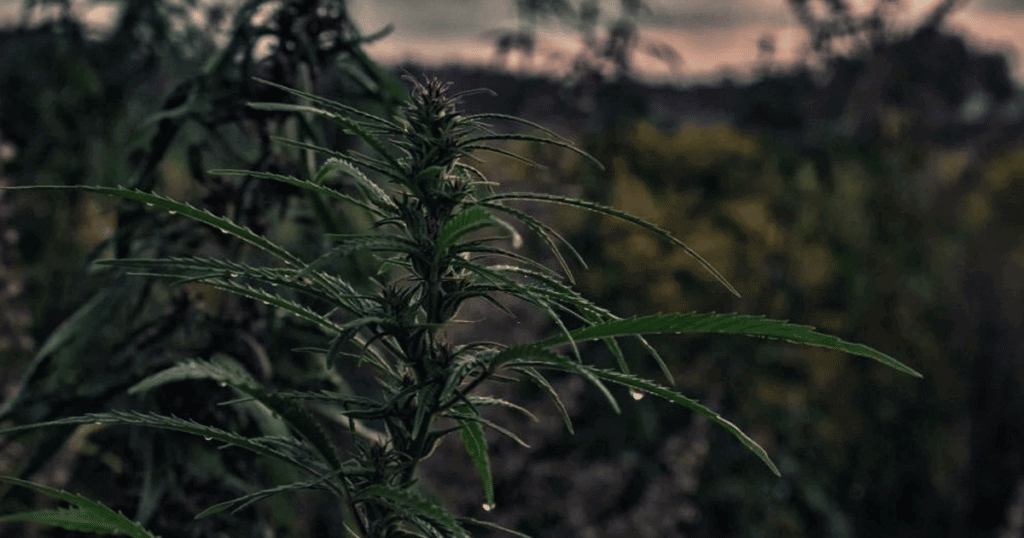Climate change is a growing global threat that affects farmers in every industry – and cannabis is no different. These changing weather patterns are causing cultivators to rethink how they grow cannabis to survive and continue producing quality marijuana plants. As if the cannabis industry needed yet another obstacle to overcome. Indeed, some cannabis growers are up to the challenge, but how exactly do they plan to overcome this climate-sized obstacle?
What Is Climate Change?
Climate is the general weather of an area, and climate change is when that general weather pattern or temperature changes. The Earth’s climate is constantly changing; it is not the same now as it was a thousand years ago, for example. However, human behavior and activity have caused a dramatic upward temperature shift, which is affecting weather patterns and properties that are not natural. This is what is meant when we speak of climate change.
These shifting weather patterns create havoc for farmers in every aspect of agriculture – from fruits to vegetables to grains to cannabis – no industry is unaffected. However, on top of the cannabis industry’s various other battles – from legalization to stigma to lack of study and information – it’s just another nail in the coffin of some cannabis growers.
How exactly are the cannabis companies and cultivators that will survive adapting to the changing climate? What changes cause them to adapt, and how will they do it?
How Climate Change is Affecting the Cannabis Industry
Climate Central, a non-profit group of scientists and journalists based in New Jersey that studies and reports on climate change, observed another example of climate change’s effect on agriculture. Their analysis shows that as weather patterns change, some wine regions may become too hot and dry for specific grape varietals.
“The average growing season temperature (April-October) in the United States has climbed 2.0°F since 1970,” according to Climate Central.
Changes of the same nature can be seen to affect the cannabis industry in the coming years.
A recent study published in the journal Earth and Space Science shows that portions of Colorado are becoming increasingly drier due to climate-driven changes in stream flows. It stated that in the future decades, it would begin to resemble Arizona, which could, in turn, affect the future of the cultivation of marijuana and hemp in the area.

How Are Growers Going To Adapt?
Testing Different Genetics
Lauren Fortier, director of cultivation for Theory Wellness, a marijuana firm based in Stoneham, Massachusetts, said they’re experiencing shorter, warmer winters in the Northeast, with less snow and more rain. Additionally, she stated that it’s becoming increasingly difficult to forecast what’s coming in the coming seasons in the area.
According to Fortier, her growing enterprise received four times the amount of rain it usually receives in a year in July 2021 alone.
This has prompted her to research which cannabis strains and genetics can endure extreme humidity and rain.
“Cannabis may be grown in any part of the world,” Fortier stated. “It’s just a matter of collaborating with other farmers, breeders, and programs to fit your genetics to your current situation.”
Shorter-term genetics, such as indicas or autoflower, may be suitable. She’s also testing strains that thrive in cold, wet climates like Maine and Washington State.
Fortier is looking for cultivars with high potency, cannabinoids, and terpenes to help him gain weight quickly.
She believes that producing two harvests each year is another approach to defend against potential crop loss for plants that are mainly cultivated outdoors.
“I’m interested in long-term soil growth and management so the soil can deal with a huge amount of moisture or flood,” Fortier stated.
She’s also experimenting with approaches like hugelkultur, which involves constructing a raised bed to assist channel water in the event of a flood while simultaneously retaining moisture during a drought.
Autoflower and Pathogens
Changes in the weather and climate cause many things, one of which is changes in pathogens and pests. Fortier stated that pest pressures are always in flux, and large pest pressures are seen yearly.
She advises gardeners to keep an eye out for caterpillar eggs, for example, and recommends that farms include plants that attract helpful insects.
Pathogens like powdery mildew are popping up considerably sooner in regions with warmer springs and windier weather, according to Av Singh, a horticulture expert at Flemming & Singh Cannabis in Nova Scotia.
“Those are the issues that come with environmental shifts,” he continued. Singh recommends cultivators choose traits that require fewer days from planting to harvest to reduce the impact of those fluctuations, such as early freezes.
He advises that the easiest way to stay safe in the cannabis cultivation industry is to have shorter seasons. According to Singh, autoflower cannabis with a 75-80-day growing cycle could be the way of the future.
Although autoflower strains do not contain as much terpene and cannabinoid concentration as other varieties of cannabis, breeding can compensate for this. As growers experiment with breeding, the genetics of strains, such as autoflower hybrids discussed above should also improve.
He also noted that cannabis, as an annual plant, has evolved in various habitats and adapted to a broader range of conditions than wine grapes, which are a perennial crop.
Finally, growers should aim to incorporate regenerative, organic concepts into their operations to diminish the effects and impact of climate change.
Experience, Mistakes, and Learning
As they say, experience is the best teacher. This is true in all aspects of life, including cannabis cultivation.
When it comes to adjusting to climate change, cannabis farmers should take a page from production agriculture, according to Bryan McLaren, CEO, and chair of Zoned Properties, a real estate development firm that works with legal cannabis in Scottsdale, Arizona.
“The cannabis business as a whole needs to truly learn the beneficial methodology from industrial agriculture,” he added, emphasizing the importance of focusing on economies of scale while using sustainable cultivation methods.

Many years before major corporate agriculture businesses took over seed production, maize and wheat farmers were able to study genetics and enhance the hardiness of their plants and thus their yields.
Suppose growers take the necessary steps to adapt and change with the climate. In that case, there is significant potential for the cannabis industry in terms of environmental regeneration and economic returns- despite any challenges the industry faces.
Enjoyed that first hit? Come chill with us every week at the Friday Sesh for a freshly packed bowl of the week’s best cannabis news!
- Chicago Police Department Revises Policy on Searches Based Solely on Marijuana Odor
- Ohio’s Senate Bill 56 Postponed, Leaving Details of Issue 2 Still Unresolved
- Sports Stars and Well Known Entertainers Join Forces Calling on Trump for Cannabis Reform
- Pinsky and the Brain: Bill White on His Journey to Consulting in Cannabis
- Delaware’s Recreational Cannabis Market Finally Set to Launch After Years of Challenges
- Excise Tax Increase to 19% and Its Impact on California Retailers














